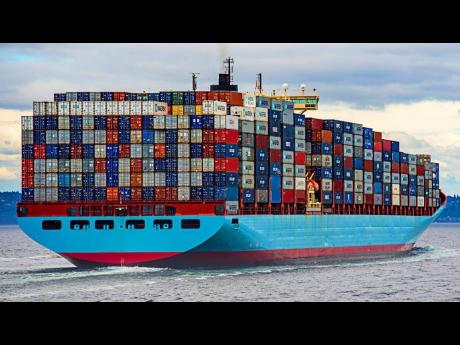Declining freight rates signal end of carriers’ record profits
One of the world’s largest carriers has signalled the end of a three-year boon that brought record profits for shipping lines during the pandemic.
The warning came from Rolf Habben Jansen, the CEO of Hapag-Lloyd, the world’s fifth-largest carrier. The executive was addressing reporters last Tuesday, while reporting “extraordinarily strong” results which saw Hapag-Lloyd report US$18.5 billion in earnings before interest, taxes, depreciation and amortisation (EBITDA).
That figure compares to US$11.1 billion in 2021, which Habben Jansen attributes to higher freight rates. However, the soaring rates which spurred the company’s earnings had already “significantly come back down” by the end of 2022, he noted, adding, “The party is over. We are back to a normal shipping business.”
Hapag-Lloyd, which has just under seven per cent of the market share, saw its revenues climb to US$36.4 billion in 2022, an increase from the US$26.4 billion earned in the year prior.
The looming change in fortunes for Hapag-Lloyd and other carriers is due to the easing of port congestion and a decline in demand. What’s more, vessel owners will have to fight for business as the segment slowly returns to pre-pandemic rates and intense competition.
It’s a change that comes as little surprise as “carriers didn’t really have to do too much to fall into the profit bonanza of the past two years”, said the Drewry Container Forecaster report back in October 2022.
The global shipping consultancy assessed that the industry could return to the low profit margins experienced before COVID-19. At the time, Drewry said the industry is heading towards a state of “managed decline” and advised carriers to focus on capacity management if they are to retain any of the sector’s gains.
As high inflation reduced the spending power of consumers and with spot rates in a decline, “liner bosses are going to have to work much harder to keep the profits flowing”, Drewry said.
“Now entering a period of managed decline, what they do next will go a long way in determining how much of the gains of the supercycle they get to keep. Failure here will mean that the industry will be doomed to return to the low-margin, pre-pandemic trend. A golden opportunity to reset expectations will be lost, possibly forever.”
The slump experienced by carriers was also forecast by Fitch Ratings in its Global Shipping Outlook 2023 report, which revealed that its deteriorating expectation for the sector “primarily reflects significantly weaker profits in the container segment due to normalising freight rates, while prospects in the tanker and dry bulk segments are more stable”.
Fitch said container freight rates fell as supply-chain pressures eased, “meaning that profits of container shipping operators will be much weaker in 2023 than in the past three years”. It continued that the main risks for the segment include a potential harsher-than-expected recession and the continuation of pandemic-related lockdowns in China.
“Though not likely, any port capacity restrictions in China in excess of lockdown-related production limitations could be positive for container freight rates.”
Despite the dim outlook, Drewry said carriers are better positioned to handle the changes. It said they would have acknowledged the prices and profits realised were unsustainable and that the industry would eventually correct itself. “In our view, the group-think has been to milk those profits for as long as possible, but start cutting back when rates sink close to a level that would be acceptable in the long run.”
It added, “Carriers will not sit idly by as spot rates tumble. To maintain profitable business they will look to offload as many older, more polluting ships from the market as quickly as they can. Our base forecast includes provision for near-record levels of demolitions in 2023.”

